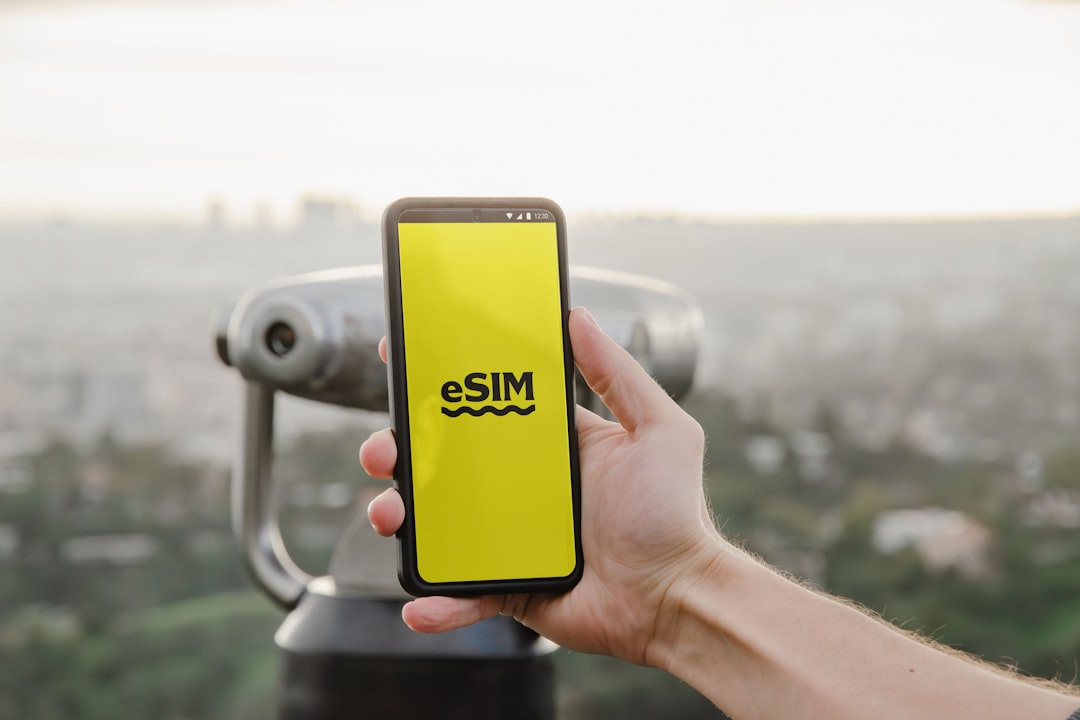The Complete Nomad Starter Kit Packing Tips and Resources

Introduction
Living a nomadic lifestyle is a thrilling blend of freedom, discovery, and constant adaptation. The first step toward a smooth transition is mastering the art of packing. A well‑thought‑out starter kit not only reduces the weight you carry but also eliminates the stress of forgetting essential items. This guide walks you through every category you need to consider, offers practical packing techniques, and points you toward the best resources to keep your nomad life organized and enjoyable.
Mindset Before You Pack
The most successful nomads share a common mindset: less is more. Every item you bring should earn its place by either serving a functional purpose, providing comfort, or contributing to your overall experience. Before you open a suitcase, ask yourself three questions:
- Do I need this item daily, or will it sit unused for weeks?
- Can I replace it with a multi‑purpose alternative?
- Is there a lighter, more compact version available?
Answering honestly will help you trim down to the essentials and keep your pack agile.
Choosing the Right Luggage
Backpack vs. Duffel vs. Suitcase
- Backpack – Ideal for those who expect to move frequently on foot, use public transport, or navigate uneven terrain. Look for a 40‑65 L pack with a sturdy frame, padded hip belt, and rain cover.
- Duffel – Offers flexible storage for irregularly shaped items. Soft‑sided duffels compress easily, while hard‑sided options protect fragile gear. Choose a duffel with lockable zippers and a detachable shoulder strap.
- Suitcase – Best for long stays in cities with reliable luggage handling services. Hard‑shell suitcases provide extra protection, but a lightweight soft‑shell with wheels and a retractable handle works well for mixed travel.
Size Guidelines
- Short trips (under two weeks) – 40‑50 L backpack or 30‑40 L duffel.
- Medium trips (two weeks to two months) – 55‑65 L backpack or 45‑55 L duffel.
- Extended trips (over two months) – 70 L+ backpack, large duffel, or a 24‑inch suitcase.
Remember that airline carry‑on limits often hover around 22 × 14 × 9 inches and 7–10 kg. Choose a bag that fits within these dimensions if you plan to avoid checked baggage fees.
Core Packing Categories
Below is a comprehensive checklist divided into logical groups. Feel free to customize based on climate, travel style, and personal preferences.
Documents and Money
- Passport (with photocopies stored separately)
- Visa pages or e‑visa confirmations
- International driving permit (if needed)
- Travel insurance policy and emergency contact numbers
- Copies of important medical records (vaccination card, prescriptions)
- Digital backup of all documents on an encrypted cloud service
- Credit cards (preferably one with no foreign transaction fees)
- Debit card with a low‑cost ATM network (e.g., Revolut, Wise)
- Small amount of local cash for immediate expenses
- RFID‑blocking wallet or passport holder
Electronics
- Smartphone (unlocked) and charger
- Power bank (10,000 mAh or higher)
- Universal travel adapter with USB‑C ports
- Laptop or tablet (if you need a larger screen for work)
- Noise‑cancelling headphones or ear buds
- Compact external SSD or high‑capacity microSD card for backups
- Portable Wi‑Fi hotspot (optional)
- E‑reader or paperback for leisure reading
- Small LED flashlight or headlamp
Clothing Essentials
The key to a light wardrobe is versatility. Choose items that can be layered, mixed, and washed quickly.
- 3‑4 T‑shirts (quick‑dry, neutral colors)
- 2 long‑sleeve shirts (one casual, one performance)
- 2 pairs of lightweight travel pants (one convertible to shorts)
- 1 pair of durable jeans or travel trousers
- 1‑2 pairs of shorts or capris (climate‑dependent)
- 1 lightweight fleece or sweater
- 1 insulated jacket (down or synthetic, packable)
- 5‑7 pairs of underwear (merino wool or synthetic)
- 3‑4 pairs of socks (including one pair of wool for colder climates)
- 1 pair of comfortable walking shoes (break‑in before departure)
- 1 pair of sandals or flip‑flops (for showers and warm weather)
- 1 set of sleepwear (e.g., a breathable T‑shirt)
- 1 hat or cap for sun protection
- 1 beanie or warm hat for cold regions
Toiletries and Personal Care
Pack travel‑size containers or purchase refillable bottles at your destination.
- Toothbrush, toothpaste, floss
- Deodorant (solid sticks last longer)
- Shampoo and body wash (solid bars reduce liquid restrictions)
- Razor and a small shaving cream (or travel‑size gel)
- Nail clippers and a small file
- Small first‑aid kit (band‑aids, antiseptic wipes, pain relievers, any prescription meds)
- Travel‑size sunscreen (SPF 30+), lip balm with SPF
- Insect repellent (especially for tropical regions)
- Menstrual products (enough for the first week, then rest can be bought locally)
- Contact lenses, solution, and backup glasses (if applicable)
Health and Safety
- Small pack of oral rehydration salts
- Basic antibiotics (if approved by your doctor)
- Prescription meds with a copy of the prescription
- Travel‑size hand sanitizer (70% alcohol)
- Portable water filter or purification tablets (useful for remote areas)
- Emergency whistle
- Compact multi‑tool (blade, screwdriver, bottle opener)
Food and Cooking
If you anticipate staying in hostels or long‑term rentals, a minimal cooking kit can save money.
- Collapsible silicone bowl or lightweight metal cup
- Spork or small set of reusable cutlery
- Portable coffee/tea maker (e.g., Aeropress or collapsible French press)
- Small bag of instant noodles or rice packets (just for emergencies)
- Reusable water bottle (stainless steel or BPA‑free plastic)
Miscellaneous Gear
- Travel journal or notebook + pen
- Packable daypack (15‑20 L) for daily excursions
- Packing cubes or compression sacks (helps keep items organized)
- Travel laundry line and a few sink‑friendly detergent packets
- Small padlock (for hostel lockers)
- Compact travel pillow (inflatable or memory foam)
- Earplugs and eye mask for better sleep in shared spaces
Packing Techniques That Save Space
Rolling vs. Folding
- Rolling works best for soft fabrics like T‑shirts, pants, and towels. It reduces creases and maximizes space.
- Folding is preferable for structured items such as jackets, dress shirts, or anything that benefits from staying crisp.
Compression Bags
- Use zip‑lock style compression bags for bulky items like jackets and sweaters. Remove excess air with a handheld pump or by pressing the bag.
- Do not over‑compress clothing that needs to breathe; this can cause odors.
Packing Cubes
- Assign one cube per category (e.g., one for tops, one for bottoms, one for underwear).
- Color‑code cubes to find items quickly without opening the entire bag.
The “Layered” Method
- Place the heaviest items (shoes, books) at the bottom of the bag, close to the spine.
- Add a layer of rolled clothing.
- Insert a compression bag with a jacket or sweater on top.
- Store small items (toiletries, electronics) in side pockets or a separate zippered compartment.
Shoe Storage
- Put socks or small items inside shoes to utilize empty space.
- Keep a thin plastic bag around each pair to prevent dirt from spreading.
Digital Backup
- Scan passports, visas, insurance cards, and important receipts. Store them in an encrypted cloud folder (e.g., Tresorit, Sync.com).
- Keep a copy on a USB drive stored separately from the originals.
Adapting the Kit to Different Climates
Tropical Environments
- Prioritize lightweight, breathable fabrics (linen, cotton, performance blends).
- Add a high‑quality mosquito net or pack a compact bug‑proof jacket.
- Increase sunscreen and insect repellent supplies.
Cold or Alpine Regions
- Add a waterproof shell jacket and insulated layers.
- Include thermal base layers, gloves, and a balaclava.
- Upgrade your sleeping bag liner or bring a compact down blanket.
Desert or Arid Areas
- Emphasize sun protection: wide‑brim hat, UV‑blocking sunglasses, high SPF sunscreen.
- Carry extra water purification tablets and a larger water bottle.
Urban vs. Rural
- Urban travel often requires more formal clothing (e.g., a button‑down shirt) and a compact laptop bag.
- Rural travel may demand sturdier footwear, a multi‑tool, and a more robust first‑aid kit.
Maintaining Your Kit on the Road
Laundry Hacks
- Use a universal sink‑friendly detergent packet; a few drops in warm water are enough for a quick hand wash.
- Hang clothes on a portable line or shower curtain rod; many hostels provide hooks.
- Air‑dry items whenever possible to reduce reliance on laundromats.
Gear Repairs
- Pack a small sewing kit (needle, thread, a few buttons).
- Keep a repair patch for inflatable items (e.g., sleeping pads).
- Carry a universal screwdriver set for electronics or bike repairs if you ride.
Hygiene Routine
- Rotate toothbrushes every three months and store them in a dry pouch.
- Use a travel case for razor blades; replace them when dull.
- Keep a small bottle of biodegradable soap for both body and dishes.
Sustainable Packing Practices
- Choose reusable containers (water bottle, coffee mug, cutlery) over disposable versions.
- Opt for solid toiletries (bars, sticks) to cut down on plastic waste.
- Pack a small reusable shopping bag for market trips.
- When possible, buy items locally to reduce the weight you carry and support the community.
Budget‑Friendly Resources
Packing Lists and Apps
- PackPoint – Generates custom packing lists based on destination, length of stay, and activities.
- Travel List – Simple checklist app with cloud sync across devices.
- Google Keep – Free note‑taking app useful for quick inventory updates.
Gear Reviews
- The Wirecutter – In‑depth reviews of backpacks, travel accessories, and tech gear.
- Nomadic Matt’s Blog – Articles on budget gear and minimalist travel strategies.
- Reddit r/onebag – Community discussions on ultralight packing and gear recommendations.
Discount Stores
- REI Outlet – Seasonal discounts on backpacks, sleeping bags, and outdoor clothing.
- Decathlon – Affordable basics for travel (e.g., travel towels, compression bags).
- eBay and local classifieds – Great for second‑hand gear that’s still in good condition.
Online Courses and Guides
- Nomadic Survival School – Video series on packing, budgeting, and remote work tools.
- Udemy’s “Travel Light” course – Step‑by‑step tutorial on mastering minimalist packing.
- YouTube channels such as “Kara and Nate” – Real‑world demonstrations of packing for different climates.
Sample Packing Timeline
| Timeframe | Action |
|---|---|
| 2‑3 months before departure | Research destination climate, visa requirements, and local customs. |
| 1 month before departure | Create a master packing list, discard items you no longer need, and start acquiring any missing gear. |
| 2 weeks before departure | Test pack your bag; adjust items based on fit and weight. |
| 1 week before departure | Wash all clothing, charge electronics, and finalize travel documents. |
| 1 day before departure | Perform a final inventory check, secure valuables in a hidden pocket, and ensure the bag is properly closed. |
Frequently Asked Questions
How many shoes should I bring?
Two pairs are usually sufficient: one sturdy pair for walking and a lightweight pair (sandals or flip‑flops) for showers and warm weather.
Can I travel with a single carry‑on?
Yes, if you choose a well‑designed 40‑55 L backpack that meets airline size limits. Pack efficiently and use compression bags to stay within weight restrictions.
What if I need more clothes during a long stay?
Plan to do laundry every two weeks. Buying a few extra items locally is often cheaper and reduces the weight you carry from the start.
Do I need a separate laptop bag?
If you work remotely, a thin, padded sleeve that fits inside your main backpack is ideal. It protects the device without adding another bag.
How do I protect electronics from rain?
Invest in a rain cover for your backpack and keep a small waterproof dry sack inside for phones, chargers, and other sensitive gear.
Final Checklist
- [ ] Passport, visas, and photocopies
- [ ] Travel insurance details and emergency contacts
- [ ] Credit/debit cards, cash, and RFID‑blocking wallet
- [ ] Smartphone, charger, power bank, and universal adapter
- [ ] Laptop/tablet (if needed) and protective sleeve
- [ ] Noise‑cancelling headphones or ear buds
- [ ] Clothing set appropriate for climate (see categories)
- [ ] Shoes: walking pair and sandals/flip‑flops
- [ ] Toiletries in travel‑size containers or solid alternatives
- [ ] First‑aid kit and any prescription meds
- [ ] Water bottle, collapsible bowl, and minimal cooking gear
- [ ] Packing cubes, compression bags, and daypack
- [ ] Travel journal, pen, and optional e‑reader
- [ ] Padlock, multi‑tool, and small flashlight/headlamp
- [ ] Digital backups of all important documents
Cross‑check each item before you close your bag. A final glance at the list can prevent the dreaded “I left my charger at home” moment.
Closing Thoughts
Packing for a nomadic lifestyle is less about cramming everything you might ever need and more about curating a functional, adaptable kit that travels light. By adopting a minimalist mindset, selecting the right luggage, organizing items into clear categories, and using proven packing techniques, you set the stage for a smoother, more enjoyable journey. Leverage the resources and apps highlighted in this guide to keep your inventory up to date, stay within budget, and maintain sustainability wherever you roam.
With a solid starter kit in hand, the world becomes your office, classroom, and playground—all waiting for you to explore. Safe travels!
Random Posts

Optimizing Income Streams as a World Traveling Worker
Learn how to build a diversified income portfolio - active gigs, passive royalties, and crypto - while mastering tax, exchange rate, and banking hurdles, so your nomadic lifestyle stays profitable and stress free
2 months ago

Essential Legal and International Payment Tips for Digital Nomads
Discover practical legal and payment hacks for digital nomads: pick tax-friendly residency, set up border-proof banking, and choose low-fee platforms so you stay compliant and keep your income flowing.
1 month ago

Tax Filing Hacks for Nomads Across Borders
Learn how digital nomads can master tax residency, use treaties, simplify foreign income reporting, and employ banking and crypto tools to stay tax efficient across borders.
1 week ago

Nomad Accommodation Secrets Finding Home Anywhere
Treat each stay as a flexible tool: ask what minimum you need to stay productive, how much budget you can spend, and which culture or lifestyle you seek. Align these three questions to turn chaos into a clear home-anywhere plan.
2 months ago

Nomad Friendly Cities Ranked with Insider Transportation Tips
Discover the top nomad-friendly cities, ranked by internet, cost, safety and more, plus local transportation hacks, from hidden bike lanes to cheap ride-hail codes, that turn any destination into a productive remote-work base.
2 days ago
Latest Posts

Essential Software Every Remote Professional Should Use
Master remote work with essential tools: instant messaging like Slack, high definition video calls such as Zoom, and asynchronous voice apps. Streamline communication, stay connected and boost productivity.
1 day ago

Mastering Remote Work Productivity for Digital Nomads and Freelancers
Learn proven habits, tools, and tactics that help digital nomads and freelancers stay focused, deliver quality work, and maintain a sustainable lifestyle while traveling the world.
1 day ago

Tech‑Friendly European Towns Perfect for Remote Living
Discover Europe’s best small towns where fast internet, affordable living and vibrant tech communities let you work remotely while soaking up historic charm, lakeside views or mountain air.
1 day ago